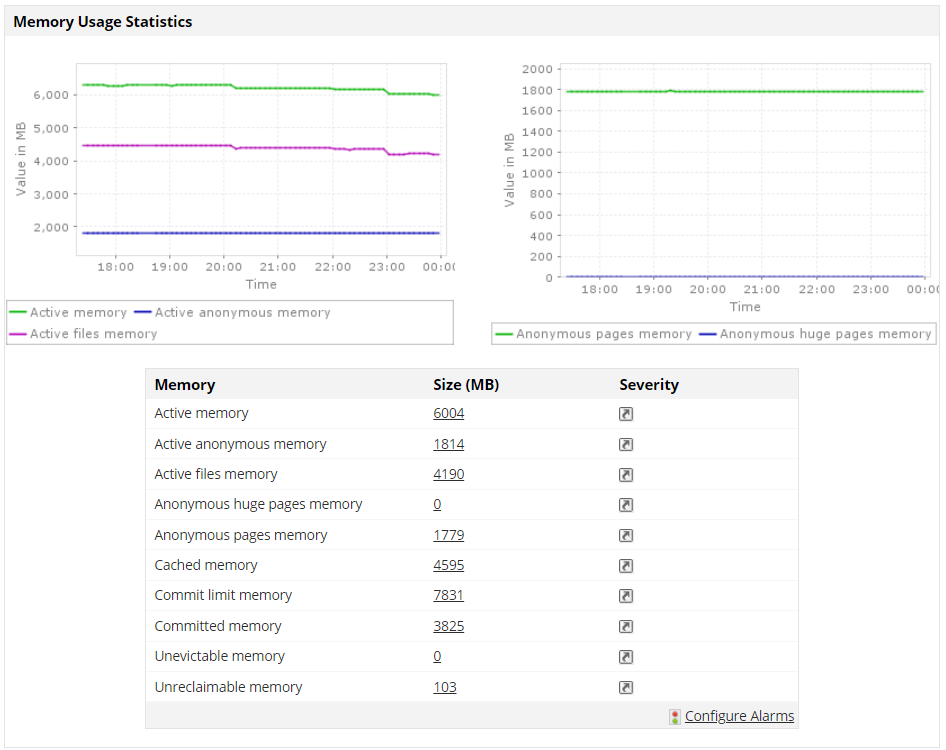

- WINDOWS MEMORY MONITORING TOOL HOW TO
- WINDOWS MEMORY MONITORING TOOL SERIES
- WINDOWS MEMORY MONITORING TOOL WINDOWS
What makes this CD special, is that it can receive the dataitems from the datasource as a “set” and then proceed or block based on whether “Any” dataitems match a condition, or require “All” dataitems match a condition. However, one of the challenges with this ConditionDetection is that it processes multiple dataitems passed to it in sequential order, which causes the “flip flop”. Most Monitors in SCOM end up using the ConditionDetection System.ExpressionFilter. What makes this monitortype so special that it can handle multiple instances? That is because it uses a special ConditionDetection. You simply need to provide the basic data for it to work: It uses a Process module included with SCOM – the .ErrorOnTooHigh monitortype, which is included in.
WINDOWS MEMORY MONITORING TOOL WINDOWS
This is a performance fragment optimized for Windows Processes, which will allow you to monitor any performance counter for a process, and it will not matter if there is one or more processes running. When you load this fragment into Visual Studio or Silect MP Author, you just need to replace/provide limited information: It also has configurable frequency for how often to check, and number of consecutive samples to check before alerting to control temporary transient conditions. The monitor uses the built in System.ProcessInformationProvider to get information about the process, then allows you to input important information like ProcessName, MinProcessCount, MaxProcessCount. This fragment monitors if the process is within the thresholds for Minimum expected processes running, and Maximum expected processes running. I have created some Management Pack Fragments to help with this.įirst off is the fragment: To resolve these issues, I prefer targeting discovered application classes, for process monitoring. This does bad things like opens an alert then immediately closes it….

WINDOWS MEMORY MONITORING TOOL SERIES
With two processes, these are monitored in series and will cause the monitor to behave erratically, causing the monitor to “flip flop” back and forth multiple times in a single second. However, if there are TWO MonitoringHost (or whatever process) instances running, and one process is over a threshold while one process is not – bad things happen. When there will only ever be a single instance of “MonitoringHost” running, then the monitor works exactly as intended. This works great, UNLESS there are multiple instances of the process. Then just choose the performance counter you wish to monitor. such as Consecutive Samples Over Threshold Monitor. You could always just use a Windows Performance Counter Monitor wizard in the console…. It can become messy over time, but simplicity comes at a cost.Īnother challenge, is what if you wish to monitor some counter that isn’t CPU or Memory? Such as Handle Count? You are on your own. However, if the group membership changes and servers are removed from the group, we do not “undiscover” the process class members that are removed. The biggest being that since it uses a group, and enables discovery of the “process class” for members of the group. There are a couple downsides to our process monitoring template. It has a nice wizard based UI, that lets you pick each process by name, and alert when a process is not running when expected to be, or running when not expected, including duration of the running process, min and max expected process counts, and CPU and Memory monitors for each process.
WINDOWS MEMORY MONITORING TOOL HOW TO
In this article, I will run through some examples of how to be successful, and what to avoid.įirst, SCOM provides a “Process Monitoring” template in the console, that works pretty well. Monitoring a Process in SCOM can be pretty straightforward, or it can be pretty tricky depending on the application.


 0 kommentar(er)
0 kommentar(er)
